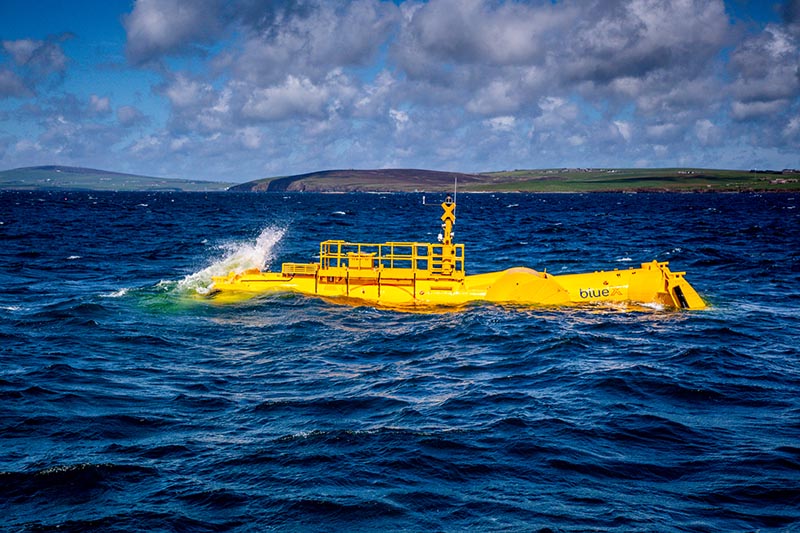
By Dr Andrea Caio, Business Development Manager
On 27th March 2024, the UK’s North Sea Transition Authority (NSTA) published its OGA Plan[1] to reduce UKCS greenhouse gas emissions. This builds on the 2021 North Sea Transition Deal[2], which committed the O&G industry to halve GHG emissions by 2030[3] (compared to a 2018 baseline) and invest £2-3billion on electrification, with a view to reach net zero basin by 2050.
The OGA Plan is a consequential driver in moving from an occasionally fuzzy concept of decarbonisation to a more practical incarnation of the term. More actions are needed to reduce emissions – this is hardly newsworthy; more interesting is the ‘how’. Asset electrification and low carbon power are key pillars identified by the Plan.
Its Central Obligation states that O&G operators / owners / license holders[4] must:
- “take appropriate steps to […] reducing GHG emissions from sources such as […] power generation, and supporting CCS projects”;
- “ensure that technologies, including new, emerging, and existing, are deployed, to their optimum effect, and […] encourage the development of such technologies.”
It is worth picking out some of the more salient regulations introduced. In the area of ‘Investment and efficiency’ there is a requirement to:
- “Produce an Emission Reduction Action Plan (ERAP) for each asset which, among other things, summarises and assesses applicability of available emissions abatement and emissions monitoring opportunities and technologies, and sets out planned emissions reduction initiatives, including for logistics emissions.”
For ‘(asset) Electrification and low carbon power’, the Plan mandates that:
- “New developments with a first O&G date after 1 January 20230 must be either fully electrified or run on alternative low carbon power with near equivalent emissions reductions. For tie-back developments, that will mean only tying back to hosts that are fully electrified or committed, to the NSTA’s satisfaction, to electrification or low carbon power.”
Acknowledging that such top-down regulations are likely to place growing emphasis on decarbonisation in the near and longer-term future, and having actively participated in the NSTA’s consultation process[5], Mocean Energy has been focusing on providing bottom-up solutions. By this we mean using ocean energy to enable electrification and low carbon power generation, working alongside integrators and operators to transform clean electron provision into turn-key offshore industry solutions.

RSP[6] is a pioneering demonstration of this, utilising our Blue X wave energy converter (above) – winner of the 2024 Offshore Achievement Award (OAA) in the Pre-commercial Deployment category[7] – to power a commercially representative subsea micro-grid in the North Sea.
Our ocean energy technology explicitly links to two central pillars of the OGA Plan:
- Blue Star (10s kW) can replace costly, carbon-intensive static umbilicals to provide local power & over-the-horizon communications for subsea assets;
- Blue Horizon (100s of kW) can enable platform electrification, as well as local subsea chemical storage & injection and other CCS relevant solutions.
Both products build on our hard-earned track record at sea, combining robust wave energy converter technology with topside solar and energy storage – delivering reliable, renewable, continuous power to serviced assets.
Currently, two-thirds of UK emissions come from the O&G industry, and, according to the OGA Plan, “electrification alone could, under the best-case scenario, deliver emissions savings of 1-2 million tonnes in 2030, equivalent to taking 1million cars off the road for a year, and up to 22 million tonnes by 2050.”
Just as the NSTA “would welcome industry owning and delivering these [emission] reductions”, Mocean Energy stands ready to support the sector with locally generated renewable energy from the ocean, continuing to enable a practical transition via the deployment of a high UK content ocean energy sector[8]. Ocean energy technology, like our Blue X wave energy converter, can pave the way to carbon mitigation via systems scalable in size and number, both now and in the near future. Ultimately, these will grow into grid-scale systems that can support a longer-term and more diverse energy transition.
As the market pull for ocean energy technology continues to grow and roadmaps begin to crystallise, opportunities must be supported by appropriate regulation, as well as funding and collaboration. It is our vision that, alongside our existing partners, new stakeholders will actively join this movement – if you think you may be one of them, do get in touch!
🌊hello@mocean.energy
[1] OGA Plan to reduce UKCS greenhouse gas emissions (nstauthority.co.uk)
[2] North Sea Transition Deal (publishing.service.gov.uk)
[3] NB: the industry is currently behind on delivering this goal – Emissions Monitoring Report 2022 (nstauthority.co.uk)
[4] ‘Relevant persons’ specified include: holders and operators of petroleum licenses; owners, planners and commissioners of upstream petroleum infrastructure; and owners of relevant offshore installations.
[5] Response to the consultation on draft OGA Plan (nstauthority.co.uk)
[6] Wave power for subsea equipment project finishes 12-month-long test program – Offshore Energy (offshore-energy.biz)
[7] Mocean’s Blue X wins OAA award – Mocean Energy
[8] The Blue X wave energy converter prototype embodies ~80% UK content.
